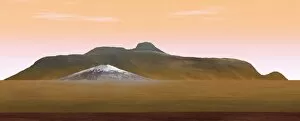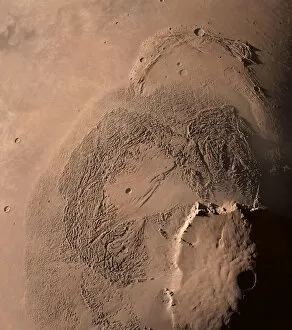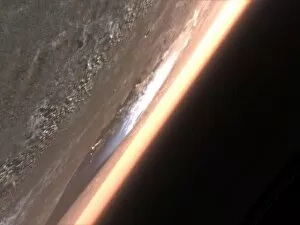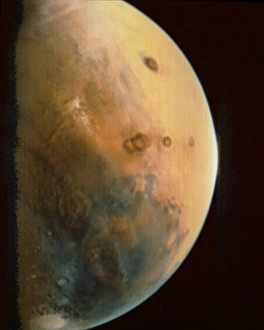Olympus Mons Collection
"Olympus Mons: A Martian Marvel Standing Tall" Standing proudly on the red planet, Olympus Mons reigns supreme as the largest known volcano in our solar system
All Professionally Made to Order for Quick Shipping
"Olympus Mons: A Martian Marvel Standing Tall" Standing proudly on the red planet, Olympus Mons reigns supreme as the largest known volcano in our solar system. Towering over its earthly counterpart, Mount Everest, this colossal giant showcases Mars' awe-inspiring landscapes. Imagine standing atop Olympus Mons and gazing out at the vast expanse of Mars. Artists have envisioned this breathtaking scene, capturing the beauty and grandeur of this magnificent volcano. From their renderings, we can witness the sprawling surroundings that stretch far beyond our imagination. The view from the rim of Olympus Mons' caldera is nothing short of extraordinary. As you peer into its depths, a sense of wonder washes over you - a reminder that nature's wonders extend far beyond Earth's boundaries. Terragen renders offer us a glimpse into what it would be like to explore this otherworldly terrain firsthand. The northwest side reveals intricate details and rugged slopes that make up this geological marvel. Mars itself adds to the allure surrounding Olympus Mons. Its rusty-red hue creates an enchanting backdrop for this majestic volcano to rise against. And let's not forget about Phobos and Deimos – Mars' two loyal moons – adding an extra touch of celestial magic to this already mesmerizing landscape. As we delve deeper into understanding Mars' topography through stunning artwork, we realize just how unique and captivating our neighboring planet truly is. With every brushstroke or digital rendering, artists transport us millions of miles away from home. So next time you gaze up at the night sky and catch a glimpse of Mars twinkling in all its glory, remember that somewhere amidst those distant plains lies Olympus Mons – an extraterrestrial masterpiece waiting patiently for humanity's exploration.

















